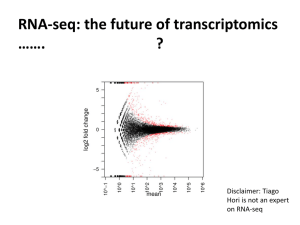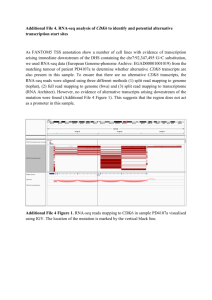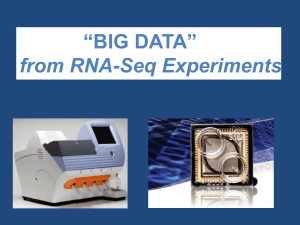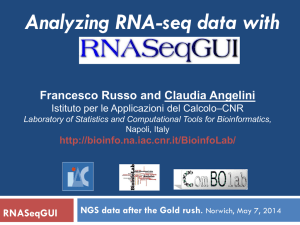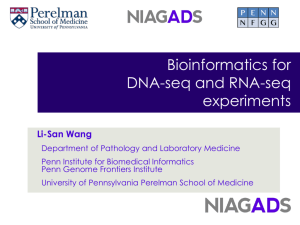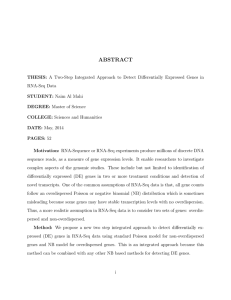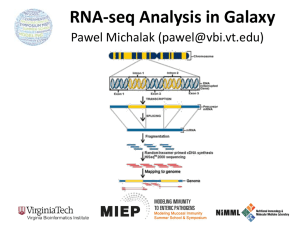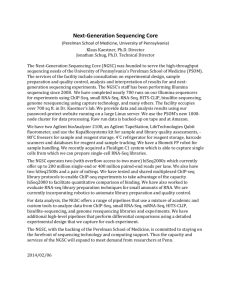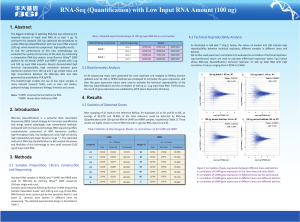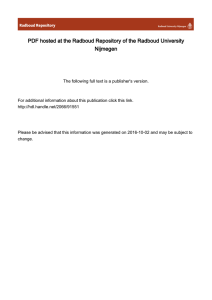Development and evaluation of RNA-seq methods Please share
advertisement
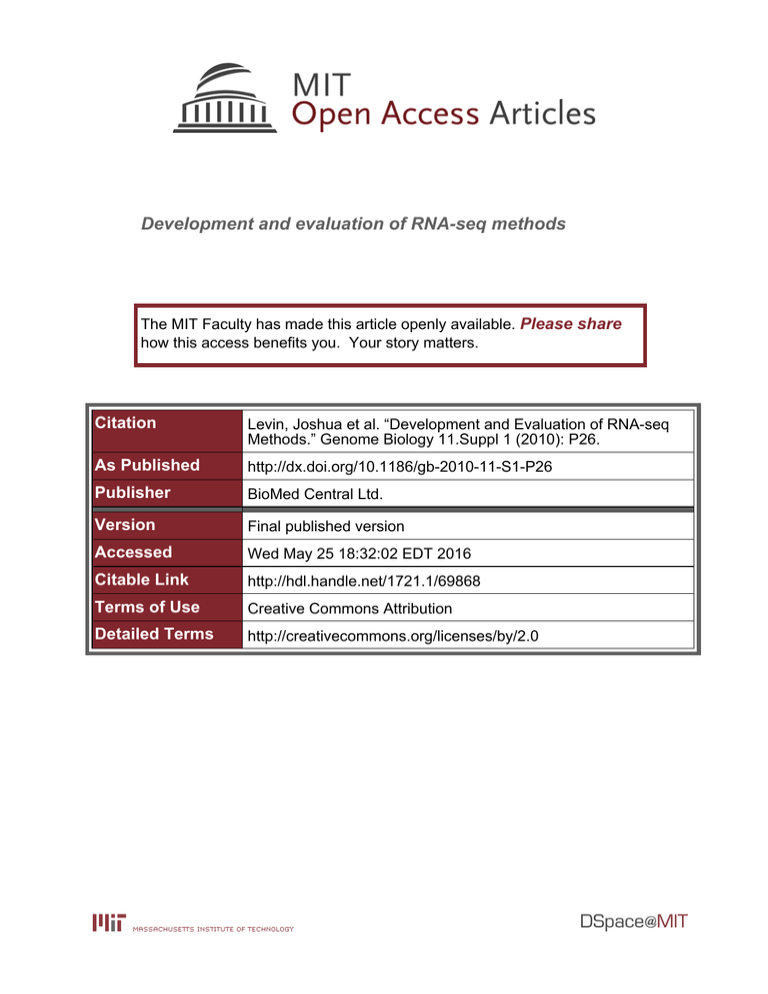
Development and evaluation of RNA-seq methods The MIT Faculty has made this article openly available. Please share how this access benefits you. Your story matters. Citation Levin, Joshua et al. “Development and Evaluation of RNA-seq Methods.” Genome Biology 11.Suppl 1 (2010): P26. As Published http://dx.doi.org/10.1186/gb-2010-11-S1-P26 Publisher BioMed Central Ltd. Version Final published version Accessed Wed May 25 18:32:02 EDT 2016 Citable Link http://hdl.handle.net/1721.1/69868 Terms of Use Creative Commons Attribution Detailed Terms http://creativecommons.org/licenses/by/2.0 Levin et al. Genome Biology 2010, 11(Suppl 1):P26 http://genomebiology.com/2010/11/S1/P26 POSTER PRESENTATION Open Access Development and evaluation of RNA-seq methods Joshua Levin1*, Xian Adiconis1, Moran Yassour1,2, Dawn Thompson1, Mitchell Guttman1, Michael Berger1, Lin Fan1, Nir Friedman2, Chad Nusbaum1, Andreas Gnirke1, Aviv Regev1 From Beyond the Genome: The true gene count, human evolution and disease genomics Boston, MA, USA. 11-13 October 2010 RNA-seq provides insights at multiple levels into the transcription of the genome as it yields sequence, splicing and expression-level information. We have been developing and comparing a wide range of RNA-seq methods for their ability to annotate transcribed genomic regions, identify differences between normal and cancer states, and quantify mRNA expression levels. We will present results in two areas: (i) strand-specific RNA-seq; and (ii) RNA-seq starting from total RNA. Strand-specific RNA-seq is a powerful tool for novel transcript discovery and genome annotation because it enables the identification of the strand of origin for non-coding RNA and anti-sense RNA, as well as defining the ends of adjacent or overlapping transcripts transcribed in different directions. Using the well-annotated Saccharomyces cerevisiae transcriptome as a benchmark, we directly compared seven library construction protocols, including both published and our own novel methods. We found marked differences in strand-specificity, library complexity, evenness and continuity of coverage, agreement with known annotations, and accuracy for expression profiling. Weighing the performance and ease of conducting each method, we identified the dUTP second strand marking [1] and the Illumina RNA ligation methods as the leading protocols, with the former benefitting from the current availability of pairedend sequencing. Our analysis provides a comprehensive benchmark, and our computational pipeline is applicable for assessment of future protocols in other organisms. RNA-seq methods that do not require the purification of mRNA will be valuable for several applications, including samples with low input amounts and/or partial degradation. In these experiments, it is necessary to reduce the fraction of sequencing reads derived from ribosomal RNA. We will present results from multiple approaches, including the use of Not-So-Random (NSR) primers for reverse transcription [2] and the NuGEN Ovation RNA-Seq kit. Author details 1 Broad Institute of M.I.T. & Harvard, Cambridge, MA 02141, USA. 2School of Computer Science & Engineering, Hebrew University, Jerusalem, Israel. Published: 11 October 2010 References 1. Parkhomchuk D, et al: Transcriptome analysis by strand-specific sequencing of complementary DNA. Nucleic Acids Res 2009, 37:e123. 2. Armour CD, et al: Digital transcriptome profiling using selective hexamer priming for cDNA synthesis. Nat Methods 2009, 6:647-649. doi:10.1186/gb-2010-11-S1-P26 Cite this article as: Levin et al.: Development and evaluation of RNA-seq methods. Genome Biology 2010 11(Suppl 1):P26. Submit your next manuscript to BioMed Central and take full advantage of: • Convenient online submission • Thorough peer review • No space constraints or color figure charges • Immediate publication on acceptance • Inclusion in PubMed, CAS, Scopus and Google Scholar • Research which is freely available for redistribution 1 Broad Institute of M.I.T. & Harvard, Cambridge, MA 02141, USA Full list of author information is available at the end of the article © 2010 Levin et al; licensee BioMed Central Ltd. Submit your manuscript at www.biomedcentral.com/submit
